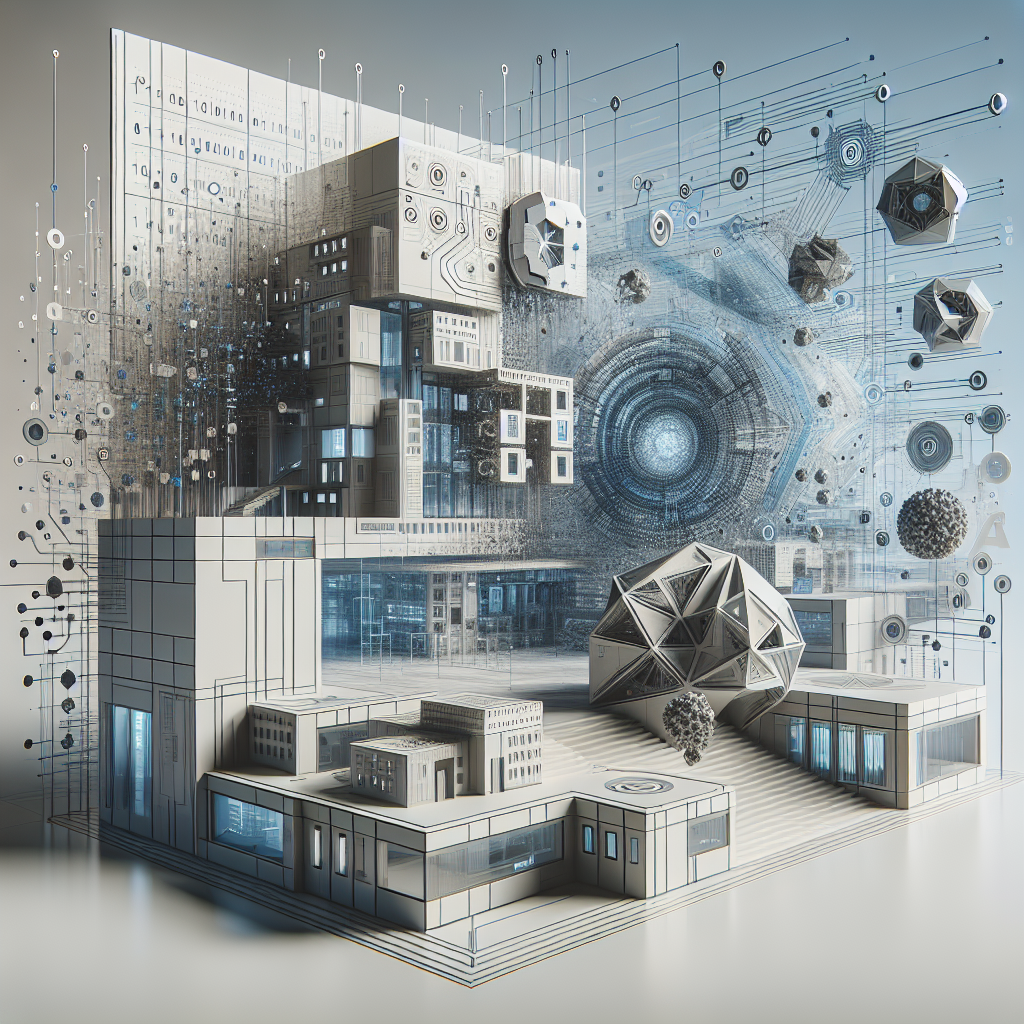Artificial Intelligence (AI) is revolutionizing various industries, including architecture. The role of AI in architectural innovation and creativity is significant, as it can help architects and designers streamline their processes, improve efficiency, and push the boundaries of what is possible in architectural design. In this article, we will explore how AI is being used in architecture and its impact on the field.
Role of AI in Architectural Innovation:
1. Design Optimization: AI algorithms can analyze vast amounts of data and generate design solutions that are optimized for specific criteria, such as energy efficiency, structural stability, or aesthetic appeal. This can help architects explore a wider range of design options and find the most efficient and effective solutions.
2. Generative Design: AI-powered generative design tools can automatically generate and evaluate design alternatives based on specified parameters. This can help architects quickly explore a large number of design options, allowing for more creative and innovative solutions.
3. Parametric Design: AI can be used to create parametric models that allow architects to easily manipulate design elements and explore different design iterations. This can help architects quickly adapt to changing project requirements and explore new design possibilities.
4. Building Information Modeling (BIM): AI can enhance the capabilities of BIM software by automating tasks such as clash detection, quantity takeoffs, and energy analysis. This can help architects and designers streamline their processes and improve the accuracy of their designs.
5. Virtual Reality (VR) and Augmented Reality (AR): AI-powered VR and AR technologies can help architects visualize their designs in a realistic and immersive way. This can help architects and clients better understand the spatial qualities of a design and make more informed design decisions.
Impact of AI on Architectural Creativity:
1. Exploration of Design Possibilities: AI can help architects explore a wider range of design options and quickly generate and evaluate design alternatives. This can encourage more experimentation and creativity in architectural design.
2. Collaboration and Communication: AI can facilitate collaboration between architects, engineers, and other stakeholders by automating repetitive tasks and providing real-time feedback on design decisions. This can help architects work more efficiently and effectively with their team members.
3. Personalization and Customization: AI can help architects create personalized and customized design solutions that meet the specific needs and preferences of their clients. This can lead to more unique and innovative architectural designs.
4. Sustainable Design: AI can help architects optimize their designs for energy efficiency, daylighting, and other sustainable design principles. This can help architects create more environmentally friendly and sustainable buildings.
5. Empowerment of Designers: AI can empower architects and designers to focus on the creative aspects of their work by automating routine tasks and providing valuable insights and design recommendations. This can help architects push the boundaries of what is possible in architectural design.
FAQs:
Q: How is AI being used in architectural design?
A: AI is being used in architectural design in various ways, including design optimization, generative design, parametric design, BIM, VR, and AR. These technologies can help architects streamline their processes, explore new design possibilities, and improve the efficiency and effectiveness of their designs.
Q: What are the benefits of using AI in architecture?
A: The benefits of using AI in architecture include improved design optimization, increased creativity and innovation, enhanced collaboration and communication, personalized and customized design solutions, and a focus on sustainable design principles. AI can help architects push the boundaries of what is possible in architectural design and create more efficient and effective designs.
Q: How can architects incorporate AI into their design process?
A: Architects can incorporate AI into their design process by using AI-powered tools and technologies, such as generative design software, parametric modeling tools, BIM software, VR, and AR. By leveraging these technologies, architects can streamline their processes, explore new design possibilities, and create more innovative and creative designs.
Q: What are some examples of AI-powered architectural projects?
A: Some examples of AI-powered architectural projects include the use of generative design algorithms to create optimized building designs, the use of parametric modeling tools to explore different design iterations, and the use of BIM software to streamline the design and construction process. These technologies have been used in a wide range of architectural projects, from residential buildings to large-scale commercial developments.
Q: How is AI shaping the future of architecture?
A: AI is shaping the future of architecture by enabling architects to create more innovative and creative designs, streamline their processes, and push the boundaries of what is possible in architectural design. As AI technologies continue to evolve and improve, architects will have access to powerful tools that can help them create more efficient, sustainable, and visually stunning buildings. AI is revolutionizing the field of architecture and will continue to play a significant role in shaping the future of the industry.

